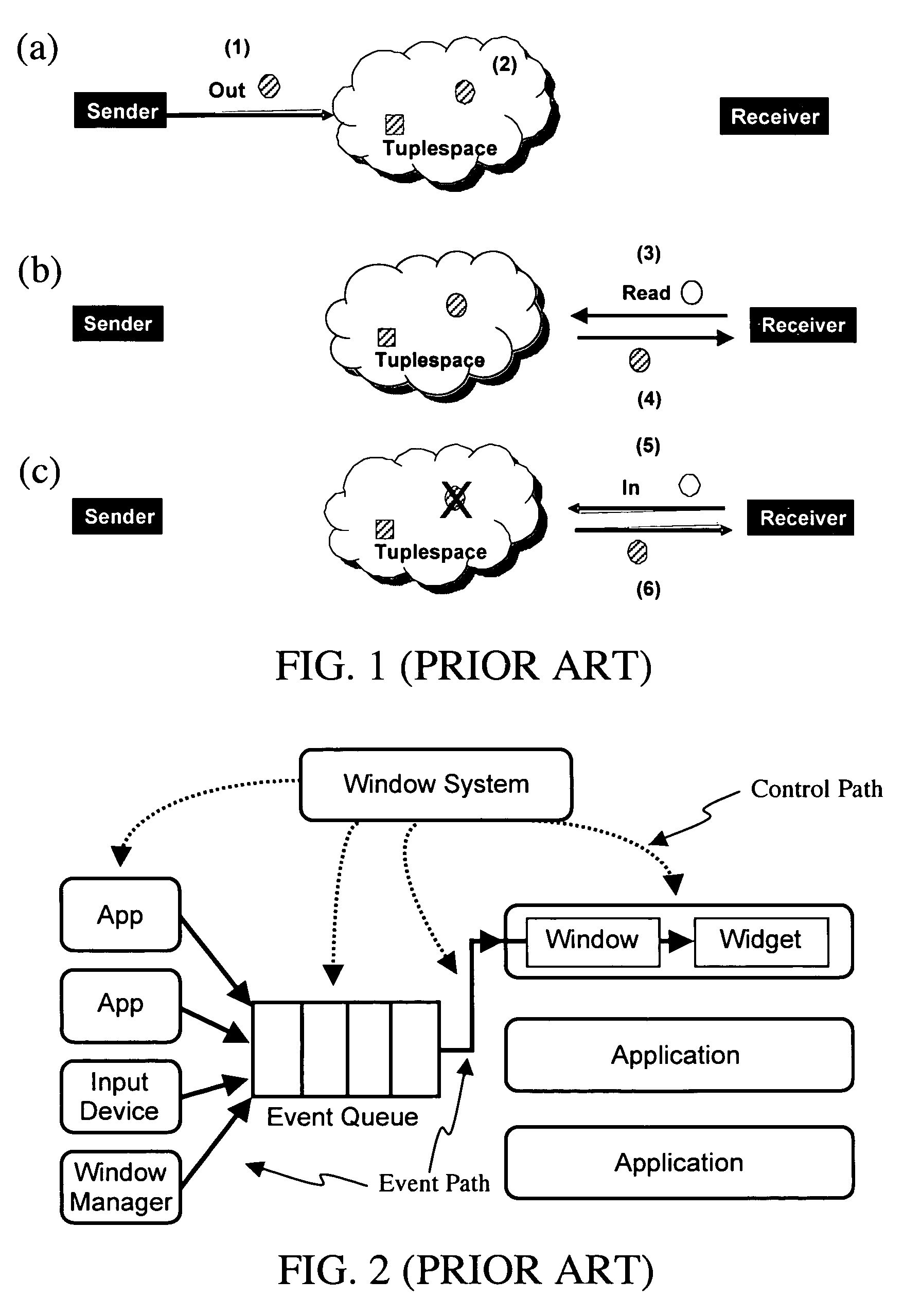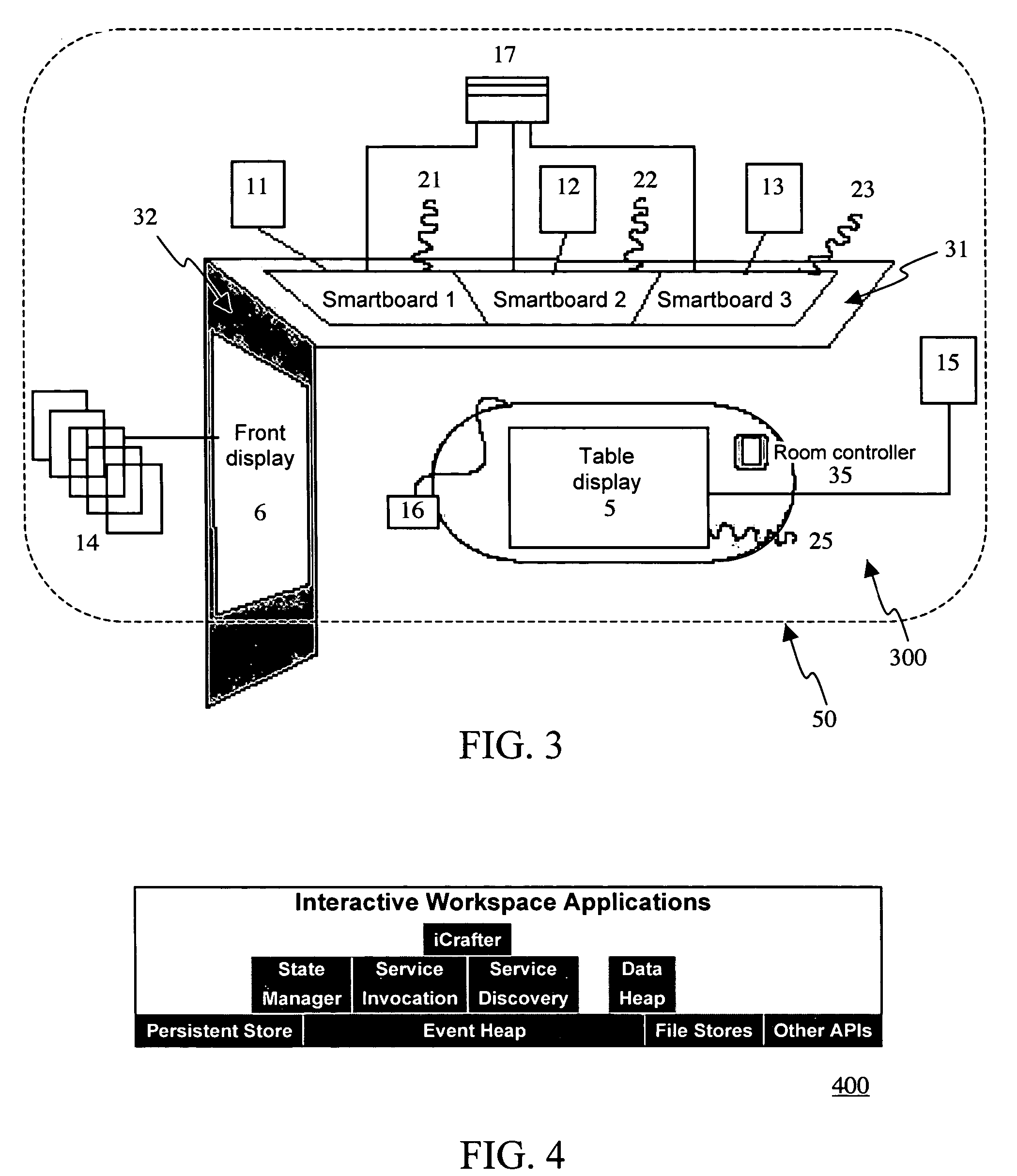Event heap: a coordination infrastructure for dynamic heterogeneous application interactions in ubiquitous computing environments
a dynamic heterogeneous application and event heap technology, applied in the field of interactive workspaces and ubiquitous computing, can solve the problems of unsuitable coordinating applications written in diverse languages for different platforms, unsuitable tuplespace implementations for dynamic heterogeneous application interactions, and lack of support for basic tuplespace models for coordinating heterogeneous application interactions
- Summary
- Abstract
- Description
- Claims
- Application Information
AI Technical Summary
Benefits of technology
Problems solved by technology
Method used
Image
Examples
example code
[0226]This subsection contains actual code for a sender application and a receiver application that use the Event Heap. Sender sends out an event with some text meant to be rendered by a speech synthesizer somewhere in the interactive workspace. The receiver picks up these speech request events, synthesizes the audio, and plays it back to the computer on the local machine using the Java speech API. The two applications represent the minimum amount of code necessary to send and receive events to and from the Event Heap, sufficient to enable even a legacy application the basic level of coordination in an interactive workspace.
Sender Application
[0227]The sender application makes a connection to the Event Heap server, creates an event, sets two field values in the event, and then posts the event. The code is as follows:
[0228]
import iwork.eheap2.*; class SpeakText { static void main(String [ ]args) { try{ / / Connect to Event Heap EventHeap theHeap=new EventHeap(arg...
PUM
 Login to View More
Login to View More Abstract
Description
Claims
Application Information
 Login to View More
Login to View More - R&D
- Intellectual Property
- Life Sciences
- Materials
- Tech Scout
- Unparalleled Data Quality
- Higher Quality Content
- 60% Fewer Hallucinations
Browse by: Latest US Patents, China's latest patents, Technical Efficacy Thesaurus, Application Domain, Technology Topic, Popular Technical Reports.
© 2025 PatSnap. All rights reserved.Legal|Privacy policy|Modern Slavery Act Transparency Statement|Sitemap|About US| Contact US: help@patsnap.com



